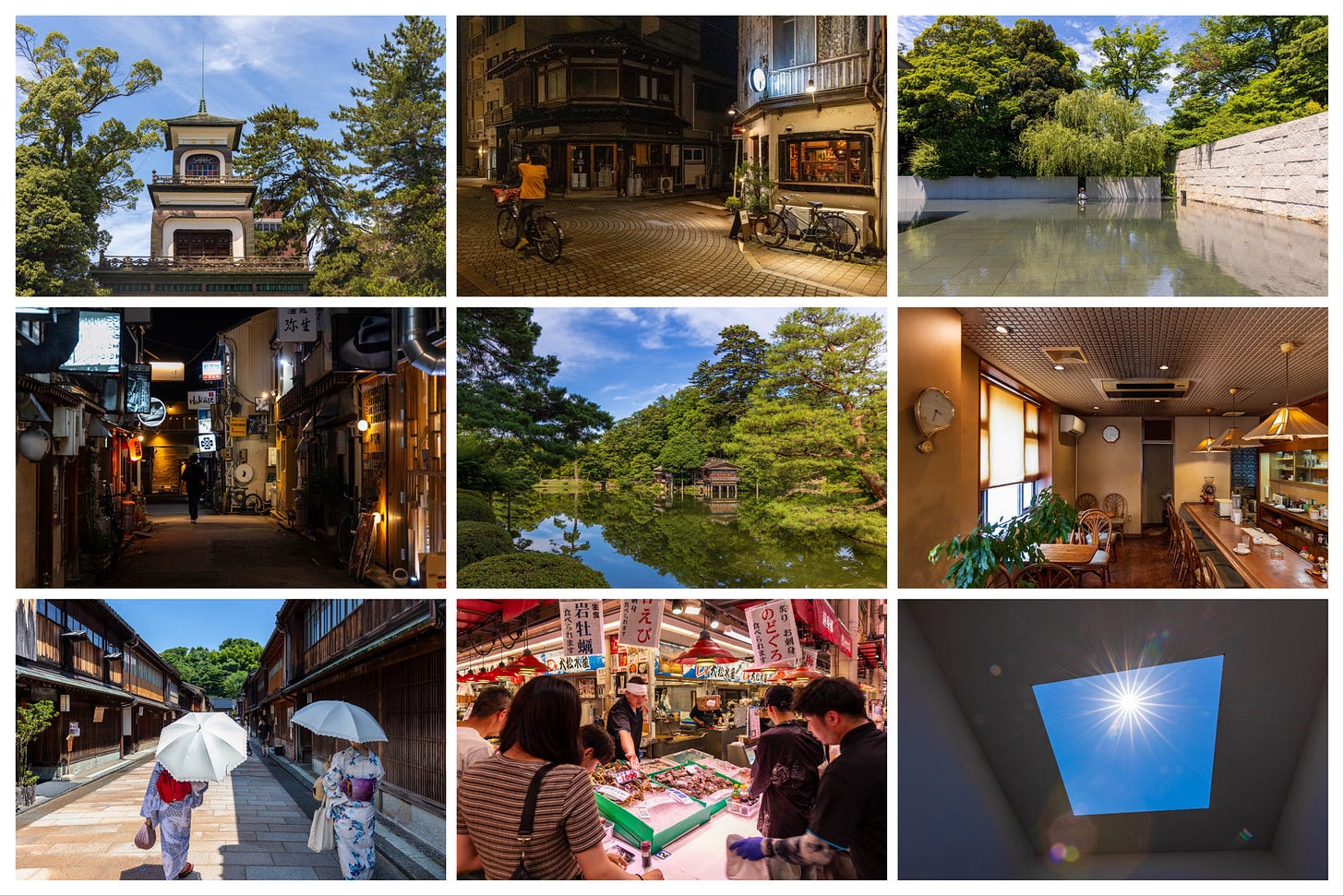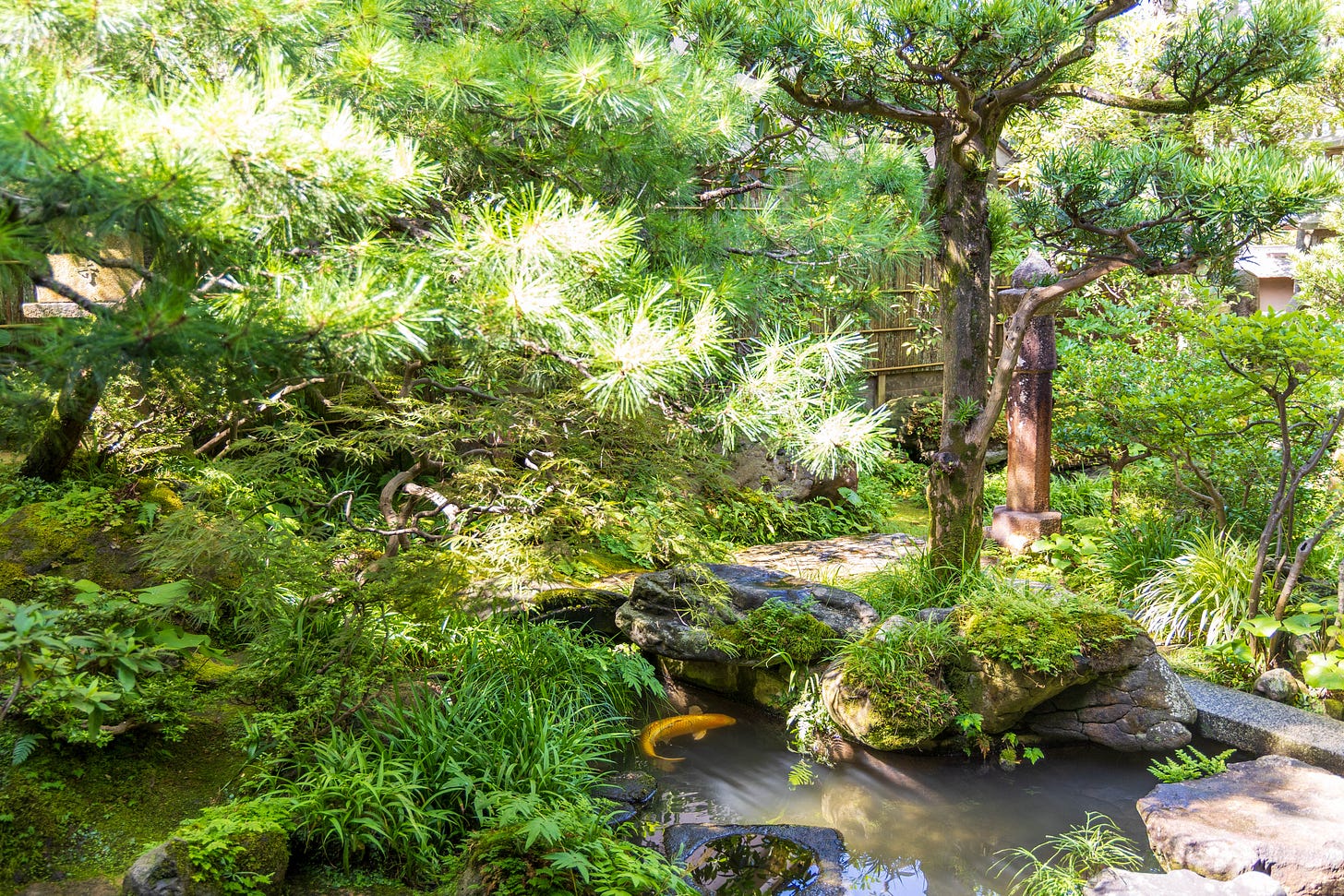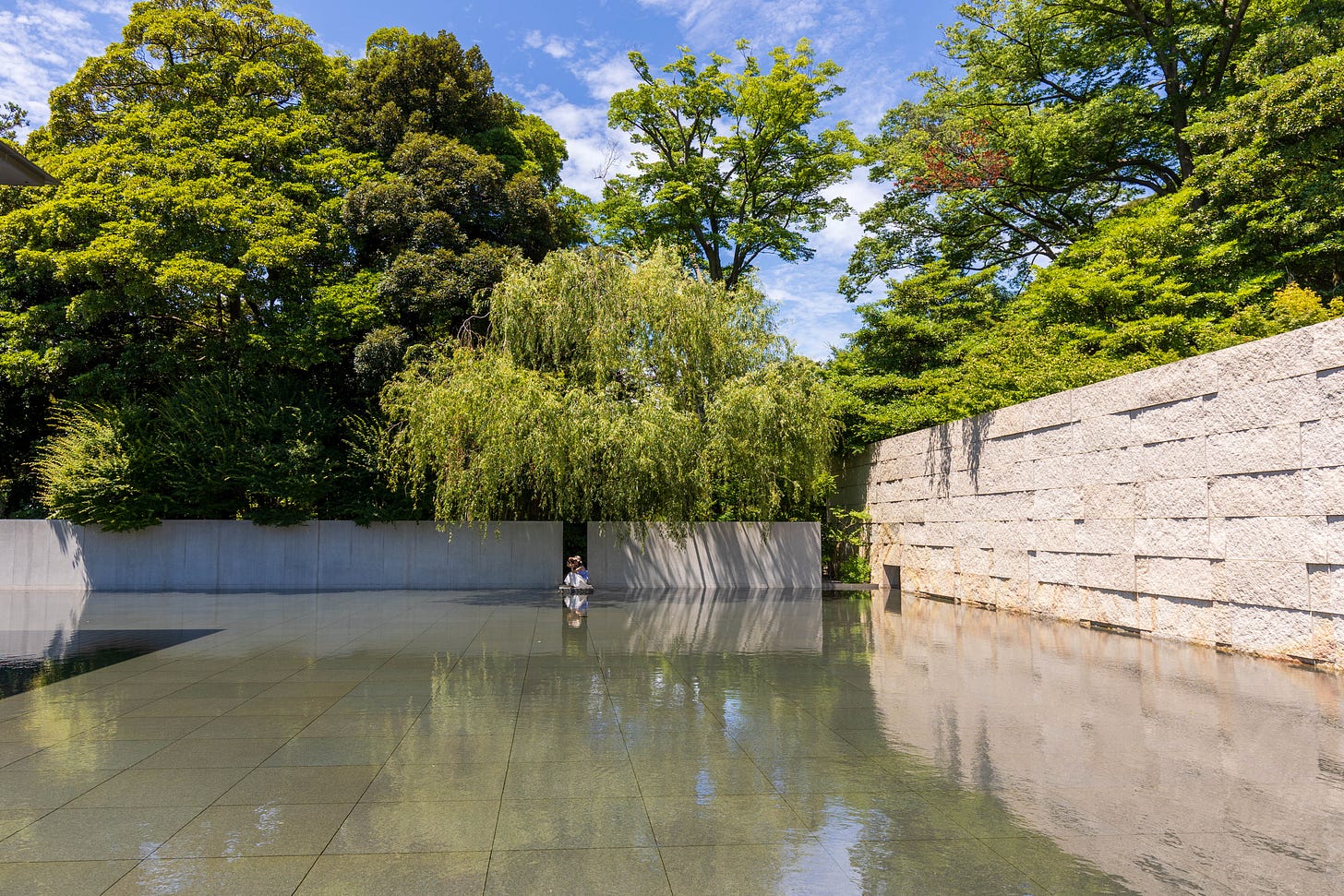One Fine Day in Kanazawa
Travel diaries: a one-day Kanazawa itinerary inspired by a recent visit.
I will definitely not pretend that traveling to Kanazawa in the middle of July was a good idea; it was a terrible one, one that I talked myself into with excuses that barely convinced even me.
After the last-minute cancellation of a hiking trip to Hokkaido during a long weekend (thanks to Ocean Day) due to stormy weather, I thought it would be a good idea to squeeze in a quick trip to Kanazawa instead. I told myself I’d be spending most of my time indoors anyway, since the city is known for its museums, and that I could visit outdoor spots in the early mornings or late afternoons. Besides, “this summer hasn’t been that bad in terms of humidity”, except that it, of course, has. There’s a heat stroke alert in Tokyo today. And, the situation was not much different in Kanazawa.
My other, slightly more compelling reason was that, despite Kanazawa being one of my favorite cities in Japan, I had never written a proper post about it, aside from a brief mention in February’s letter titled 'Snow Falling on Cedars'. I just did not have enough photos to craft a guide-type post after losing all my images from a previous ten-day trip due to an external hard drive malfunction. The few I had were either from the autumn colors season or a very snowy weekend visit, both of which can make almost any city look like a dreamland; therefore, they may be a bit misleading for those planning a visit outside of those two gorgeous seasons. But of course, since no one was likely to sue me for using autumn colors or snow scenes in the post, this was also a forced excuse for a city break in late July, when even a 6 a.m. coffee run across the street felt dangerous without a UV-blocking umbrella.
So, while I am glad that I am now able to offer a diary-style post covering a day in Kanazawa for paid subscribers, a little similar to the earlier One Fine Autumn Day in Kyoto post, I will in the future need to have way more compelling reasons than the ones outlined above for a city break in Japan (or even to leave my house in the weekends) in the middle of the summer.
In the rare chance that I didn't turn you off from Kanazawa (it is a wonderful city, when the humidity level is not at 80%), below is a one-day itinerary suggestion for Kanazawa. It’ll probably feel a bit rushed, and you’d likely enjoy it more by spreading it over two days and adding a few extra stops. But since “One Fine Day in Kanazawa” sounds catchier than “Two Fine Days in Kanazawa”, and because I did it in one day, here’s the result, starting with breakfast and ending with a slightly boozy dinner.1
All the places listed below are covered by various passes available for purchase online, allowing you to choose the one that best suits your needs, depending on the length of your stay and the places you intend to visit. This is a link outlining the alternatives: Kanazawa Discount Passes.2
7 a.m. - Hotel: OMO Kanazawa
During my last two trips to Kanazawa, I stayed at OMO5 by Hoshino Group, located in the Katamachi district, the culinary heart of Kanazawa. It is a new and stylish city hotel, where you can occasionally find a single room for 10,000 Japanese Yen and a double room for around 17,000 Japanese Yen. As I also mentioned in the Hokkaido Travel Diaries, I usually try to stay at an OMO property if there's one in the city I'm visiting. I think they offer a great price-to-quality ratio, often with a lively café on site and rooms that are both stylish and functional.
While the hotel is a little more than a twenty-minute walk from the train station, it’s relatively close to Kenroku-en Garden and Kanazawa’s two famous museums, likely the area where you’ll be spending most of your time.
8 a.m. - Breakfast: Isotope
Omo Hotel offers a breakfast option (you choose one of three main dishes, in addition to access to a fruit and salad bar), but I suggest an alternative to start the day, located close to the samurai district, which is an ideal place to start the day`s sightseeing.
Isotope (アイソトープ), which opens at 8 a.m., offers a simple yet satisfying breakfast menu featuring classic breakfast items, such as eggs and other usual suspects, as well as chicken porridge, in a cozy two-story wooden building. The staff is very lovely, and the place is popular, so it's best to arrive a little early. I think it is ideal for both those looking for an Asian-style breakfast and those seeking options more fitting for Western tastes.
9 a.m. - Nagamachi Samurai District
Isotope is right across the street from the Nagamachi Samurai District. Kanazawa, ruled by the Maeda clan, was one of the most prosperous domains in Edo-period Japan. Once home to only 5,000 residents, the city became home to nearly 100,000 residents by the early 18th Century, bringing together not only samurai but also artists and merchants, who greatly contributed to the development of craft culture in the city.
Spared from the wide-scale bombings during World War II, just like Kyoto, the city now features several well-preserved historical districts that, with a little imagination and a bit of effort to overlook the surrounding high-rise buildings, still evoke the elegant aura of the Edo period.
Nagamachi District, nestled between two rivers, is the place to visit for a glimpse of Kanazawa’s samurai heritage, with its network of narrow cobbled streets and a collection of restored samurai houses.
Many of these beautiful houses, likely to send you into a bout of daydreaming, are privately owned. Fortunately, though, one has been turned into a museum: the Nomura House. It is a relatively small house, but it still features a museum space with family heirlooms and even swords on display, as well as several other rooms that open through shoji doors to a beautiful garden and a pond, home to some of the largest koi fish I have ever seen.
Another alternative stop in the area is Shinise Memorial Hall, which served as a pharmacy (established in 1579, even before the Edo Period), offering insight into the daily life of the merchant class of the period.
10:00 a.m. - D. T. Suzuki Museum
Our next stop, a twenty-minute walk from the samurai district, is my favorite place in Kanazawa, which I usually visit more than once in each trip - D. T. Suzuki Museum, devoted to the life of the renowned Kanazawa-born Buddhist scholar D. T. Suzuki (1870-1966).
The main allure of the museum, which is divided into three complementary sections, is the building itself. The Exhibition Space, featuring works and photographs of D.T. Suzuki, is a place to get acquainted with the life and achievements of D.T. Suzuki, while the Learning Space, a small library, is dedicated to his writings. Finally, the Contemplative Space, which opens onto the Water Mirror Garden, invites you to reflect on his work.
Mainly a Zen scholar, though interested in various other forms of Buddhism, D. T. Suzuki was described by another scholar as a “radical”—in the sense that he went to the root of everything to find the human, leaving behind nationality, age, and everything else.
“Right here, right now, there is something that we should do. If you miss it in this situation, a flower that blooms in a thousand years will not do.” D. T. Suzuki




